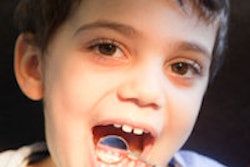The International and American Associations for Dental Research have published two studies in the Journal of Dental Research that examine the definitions of dental caries susceptibility to hypomineralization and hypoplasia and propose a new classification for severe early childhood caries (ECC).
The first study (JDR, February 27, 2012), conducted by M.E.C. Elfrink and colleagues from the Academisch Centrum Tandheelkunde Amsterdam, focused on the relationship between deciduous molar hypomineralization (DMH) and permanent molar incisor hypomineralization (MIH).
First permanent molars develop during a period similar to that of second primary molars, with possible comparable risk factors for hypomineralization. Children with DMH have a greater risk of developing MIH. In this study, clinical photographs of clean, moist teeth were taken with an intraoral camera in 6,161 children. First permanent molars and second primary molars were scored with respect to DMH or MIH. The prevalence of DMH and MIH was 9% and 8.7% at child level and 4% and 5.4% at tooth level.
The relationship between the occurrence of DMH and MIH suggests a shared cause and indicates that, clinically, DMH can be used as a predictor for MIH, according to the study authors.
The other study (JDR, April 23, 2012), conducted by Page Caulfield, DDS, PhD, and colleagues from New York University, proposes a new classification of severe early childhood caries called hypoplasia-associated severe early childhood caries (HAS-ECC), which affects mostly young children living at or below poverty and is characterized by structurally damaged primary teeth that are particularly vulnerable to dental caries.
These predisposing developmental dental defects are mainly permutations of enamel hypoplasia (EHP), the study authors noted.
Anthropologists and dental researchers consider EHP an indicator for infant and maternal stresses including malnutrition, a variety of illnesses, and adverse birthing conditions.
Differentiation of HAS-ECC from other forms of early childhood caries is warranted due to its distinct etiology, clinical presentation, and eventual management, according to the study authors.
Defining HAS-ECC has important clinical implications, they added: Therapies that control or prevent other types of caries are likely to be less effective with HAS-ECC, because the structural integrity of the teeth is compromised prior to their emergence into the oral cavity. The study suggests that to prevent HAS-ECC, dentists must partner with other health providers to develop interventions that begin with pregnant mothers, including better pre- and postnatal care and nutrition.



















